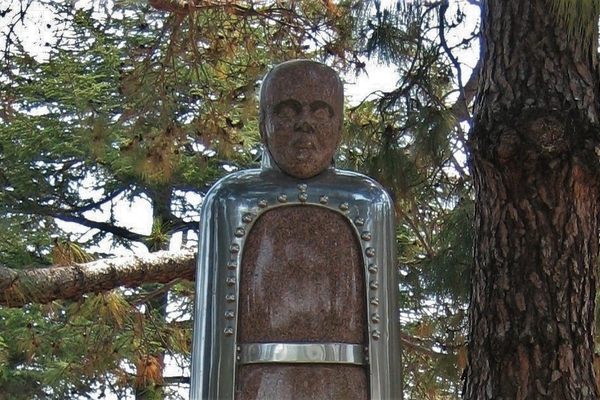About
A government-funded lab devoted to the growth and study of kilo upon kilo of potent, legal weed sits in a nondescript pocket of an enormous state university. This is not a campus legend, nor is it a plot point from some long forgotten, straight-to-VHS comedy, but the structural embodiment of the United States’ policy to both marijuana’s legality and its medical potential.
The federal government commissioned the University of Mississippi’s Marijuana Research Project, or M-Project, to grow cannabis for National Institute of Drug Abuse research in 1968, originally germinating Mexican seeds seized by the D.E.A. Since then, the project has expanded to grow scores of varieties of the drug from countries all over the world, both in controlled greenhouses and on the laboratory’s now-fallow 12-acre grounds. A Los Angeles Times article described the project’s current “stash” in terms that might startle the haziest dorm-room Rasta: “Fifty-pound barrels are brimming with dried, ready-to-smoke weed. Freezers are stocked with buckets of potent cannabis extracts. Large metal canisters sit, crammed full of hundreds of perfectly rolled joints.”
Since marijuana is classified as a Schedule I narcotic, all federally approved studies have to score from the M-project. Mahmoud ElSohly, the head pharmacologist at the lab, has said this is essential, both to maintain a rigorous selection process for approved experiments and to maintain a safe, standardized material across different clinical tests. But many scientists have claimed that the bars the lab requires them to clear are absurdly, well, high. While millions of people can get pharmaceutical-grade pot from dispensaries in 23 states and Washington, D.C., experiments sanctioned by the Marijuana Research Project require approval from the DEA as well as a panel with N.I.D.A. representation. “The D.E.A. is acting like this is 1935 and cannabis is this extremely dangerous substance,” said Orrin Devinsky of NYU’s Langone Medical Center, on his attempts to obtain marijuana for a study on epilepsy treatment.
These critics claim that the M-Project serves an agenda of keeping the drug illegal, pointing to the fact that ElSohly’s mentor and predecessor at the lab, Dr. Carlton Turner, joined the Reagan administration as the director of drug abuse policy, helping to develop to the “Just Say No” campaign and playing a role in the decade’s mania for mandatory minimum sentences for nonviolent drug offenders. For his part, ElSohly claims that the lab’s research has shown the efficacy of the drug as a pharmaceutical, but that methods that promote the body’s absorption of THC, such as smoking or eating, are not a safe way to experience the drug’s benefits. He’s been developing a means of transmitting pot’s curative chemicals without making the user high, but his first attempt—delivery through the rectum—proved unmarketable. "People really don't like suppositories," he told CNN.
Given the push to legalize marijuana cultivation, as well as the growing public awareness of the benefits of even non-rectal administration of cannabis, it might seem safe to assume that the M-Project’s days are numbered. However, in March of 2015, the lab’s contract was renewed to the tune of nearly $70 million, and the project plans to soon expand its cultivation to grow 30,000 plants. As for Mississippi law, the use, possession, sale, and cultivation of marijuana is currently illegal statewide, with the exception of these 12 acres situated between tracts of student housing and the Ole Miss softball fields. Over three-fourths of the prison population in the state, which is the third highest per capita in the nation, is behind bars for nonviolent offenses, primarily due to mandatory minimum sentences for drug possession.
This figure does not include students attempting to test the legend of the M-Project, whether by means inelegant (attempting to scale the laboratory’s outer fences) or comic (casting fishing lines into the fields). Ehlsoly, harshing a mellow, cites cameras, motion detectors, guards, and electronic security as the lab’s means of discouraging such intrusions.
Related Tags
Know Before You Go
Easy to find, but not open to the public, for obvious reasons
Community Contributors
Added By
Published
December 2, 2015
Sources
- http://www.nytimes.com/2008/12/23/health/23conv.html?_r=0
- http://www.cnn.com/2009/CRIME/05/18/government.marijuana.garden/index.html?eref=rss_us
- http://www.ibtimes.com/how-mississippi-lab-taught-us-everything-we-know-about-marijuana-better-or-worse-1890470
- http://www.usatoday.com/story/news/nation/2012/12/28/medical-marijuana-lab-in-mississippi/1796475/
- http://time.com/3755253/university-mississippi-marijuana/
- http://www.latimes.com/nation/la-na-pot-monopoly-20140529-story.html
- https://en.wikipedia.org/wiki/List_of_U.S._states_by_incarceration_rate
- medicalmarijuana.procon.org/view.resource.php?resourceID=000881


















